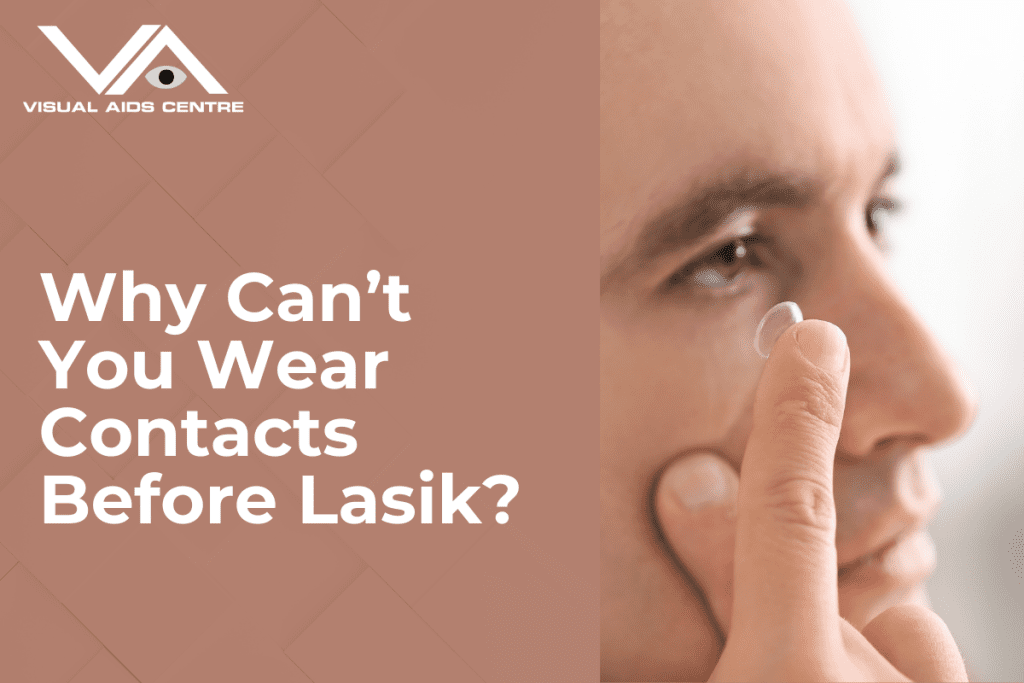Table of Contents
ToggleGearing Up for LASIK?
If you’re considering LASIK (Laser-Assisted In Situ Keratomileusis) surgery to correct your vision, you’ve probably encountered some guidelines about contact lens wear prior to the procedure. You might wonder why this restriction exists and how it impacts the surgery. Let’s delve into the details of why wearing contacts before LASIK is a no-go and what steps are involved in preparing for this life-changing procedure.

Understanding the Cornea and Contact Lenses
Before we explore the reasons behind avoiding contact lenses before LASIK, it’s essential to understand the relationship between your cornea and contact lenses. The cornea is the clear, dome-shaped surface at the front of your eye that refracts light to help focus images onto the retina. Contact lenses rest directly on the cornea, altering its shape temporarily to correct refractive errors like nearsightedness (myopia), farsightedness (hyperopia), or astigmatism.
Contact Lenses and Corneal Changes
Contact lenses, especially those worn for an extended period, can reshape the cornea. This reshaping is known as corneal moulding and is a temporary alteration caused by the small amount of pressure of the lens on the corneal surface and reduced oxygen flow to the cornea. When you wear contact lenses regularly, the cornea conforms to the shape of the lens to provide clear vision.
Importance of Corneal Stability for LASIK
The stability of your cornea’s natural shape is crucial for accurate LASIK surgery. LASIK works by reshaping the cornea permanently using a laser, correcting refractive errors and reducing or eliminating the need for glasses or contact lenses. For LASIK to be effective and safe, the surgeon needs an accurate, natural, and stable baseline measurement of your cornea’s shape.
Why Stop Wearing Contacts Before LASIK?
The primary reason for discontinuing contact lens use before LASIK is to allow your cornea to return to its natural shape and stability. Contact lenses can distort the cornea’s surface, which can affect the precision of preoperative measurements and the accuracy of the surgical procedure itself.
Here are the key factors why contact lens wear is typically restricted before LASIK:
1. Corneal Measurements:
Accurate measurements of your cornea’s natural curvature and thickness are essential for planning LASIK. Contact lenses can alter these measurements, leading to inaccuracies in the surgical plan. Imagine attempting to tailor a shirt without removing your current one—it wouldn’t result in a perfect fit! Similarly, inaccurate LASIK measurements can lead to imperfect results, potentially resulting in residual refractive errors or uneven vision correction. This emphasizes the importance of precise pre-operative measurements and careful assessment for optimal outcomes.
2. Corneal Health:
Prolonged contact lens wear can affect the health of the cornea, leading to:
– Infection: LASIK involves exposing the cornea, which can increase the vulnerability to infection. Taking a break from wearing contacts allows your eyes to focus on healing and reduces the risk of infection after surgery.
– Dry Eyes: LASIK can temporarily impact tear production, resulting in dry eyes. Continued use of contacts can worsen this dryness. Taking a break from contacts allows your eyes to adjust and naturally produce sufficient tears, promoting a smoother recovery process.
Therefore, a healthy cornea is vital for successful LASIK outcomes.
3. Stable Baseline:
By allowing the cornea to revert to its natural, uninfluenced shape, the surgeon can obtain a stable baseline measurement just before surgery, ensuring precise correction of refractive errors.
How Long Should You Take a Break from Contacts?
The duration for which you should discontinue contact lens use before LASIK varies depending on the type of lenses you wear:
– Soft Contact Lenses: Typically, you should stop wearing soft contact lenses for at least one to two weeks before your LASIK evaluation and surgery. This allows sufficient time for the cornea to stabilise.
– Rigid Gas Permeable (RGP) Lenses: If you wear rigid lenses, you may need to stop using them for a longer period, up to several weeks or even months. RGP lenses can induce more significant corneal changes that require a longer recovery time.
– Toric Lenses: Specifically designed for astigmatism, these lenses can cause a more pronounced change in corneal shape. It is typically recommended to discontinue wearing toric lenses four to six weeks prior to your consultation and surgery for optimal assessment and outcomes.
Your LASIK surgeon will provide specific instructions tailored to your individual circumstances, considering the type of lenses you use and the health of your eyes.
Transitioning from Contact Lenses: Explore Alternatives
Taking a hiatus from contact lenses doesn’t necessarily mean enduring blurry vision. Here are alternative options to consider:
– Eyeglasses: Opting for eyeglasses provides reliable clarity without interacting with your cornea, making them ideal leading up to LASIK.
– Daily Disposable Lenses: If glasses are not feasible for the entire duration, discuss the option of using daily disposable lenses with your doctor. These lenses are worn for a single day and then discarded, reducing the risk of infection. However, always follow your doctor’s advice for the best approach.
What to Expect During LASIK Preparation
During the preoperative evaluation for LASIK, your ophthalmologist will conduct various tests to assess the health and characteristics of your eyes. These tests include:
– Corneal Topography: Mapping the shape and curvature of your cornea to guide the surgical plan.
– Pachymetry: Measuring the thickness of your cornea to ensure it’s suitable for LASIK.
– Tear Film Evaluation: Checking for any signs of dry eye syndrome, which can affect postoperative comfort.
Benefits of Following Preoperative Instructions
While it may be inconvenient to refrain from wearing contact lenses before LASIK, following these guidelines is crucial for achieving optimal outcomes. By allowing your cornea to stabilize, you enhance the accuracy and safety of the LASIK procedure, leading to clearer vision and improved quality of life. If you’re considering LASIK, consult with an experienced ophthalmologist who can provide personalised guidance and ensure that you’re well-prepared for this transformative vision correction procedure.
Remember, the short-term adjustments will pave the way for a long-lasting improvement in your vision and overall eye health.









